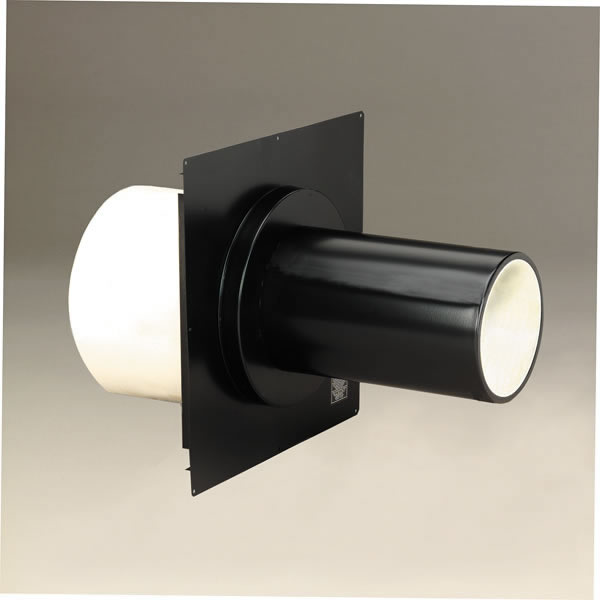
BDM Insul-Flue 6-Inch Insulated Thimble
BDM Insul-Flue 6-Inch Insulated Thimble When combined with a cover, this Insul-Flue 6 Inch Insulated Thimble can be used to pass pipe through a seven-inch combustible wall into a masonry chimney. You can also attach two thimbles together in order to pass through walls up to fifteen inches thick.
Hi all,
We are looking to get supplies together to install a wood stove with a six inch outlet, through a convential 2x6 studded framed wall into a new brick chimney built right up against the exterior wall. The product linked above seems to do the trick. It calls for stainless steel smoke pipe to run from the living space to the flue, flush with the closer wall of the flue.
Would that be single wall stainless pipe, to keep a nominal 6" inside diameter?
Do I really need stainless steel for this, as opposed to standard mild steel pipe through the thimble to the flue? Where can I find a 24" length of single wall stainless pipe.
Is this what I would pass through the wall thimble to the flue?

DuraBlack 6'' x 24'' Stainless Steel Single-Wall Pipe | Stove Pipe
6'' x 24'' DuraBlack Stainless Steel Single-Wall Pipe - 6'' x 24'' DuraBlack SS Single-Wall Stove - Find 6 inch DuraBlack black single wall stove pipe lengths here along with expert advice and installation information - NorthlineExpress.com
Thanks for you help.

